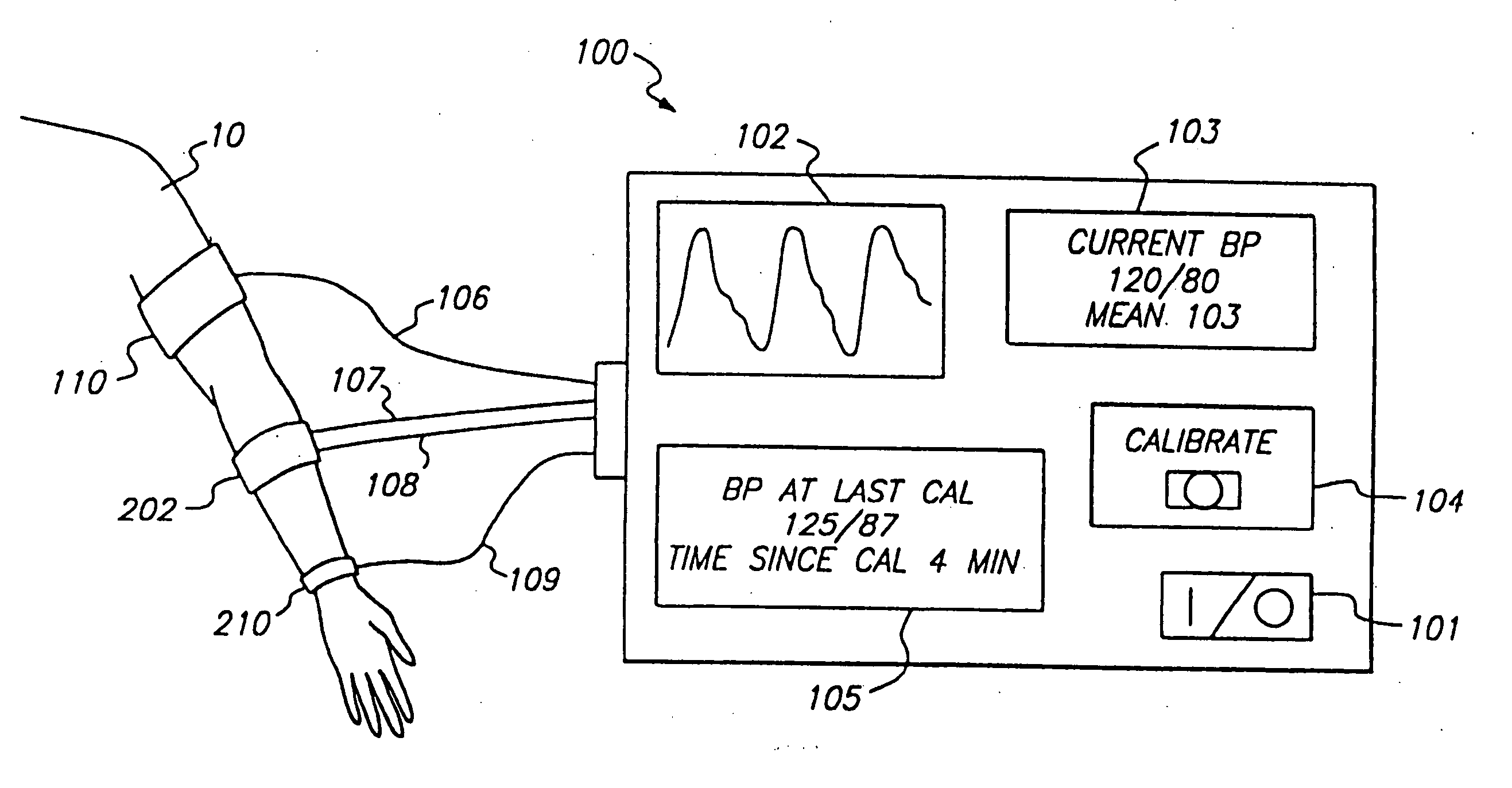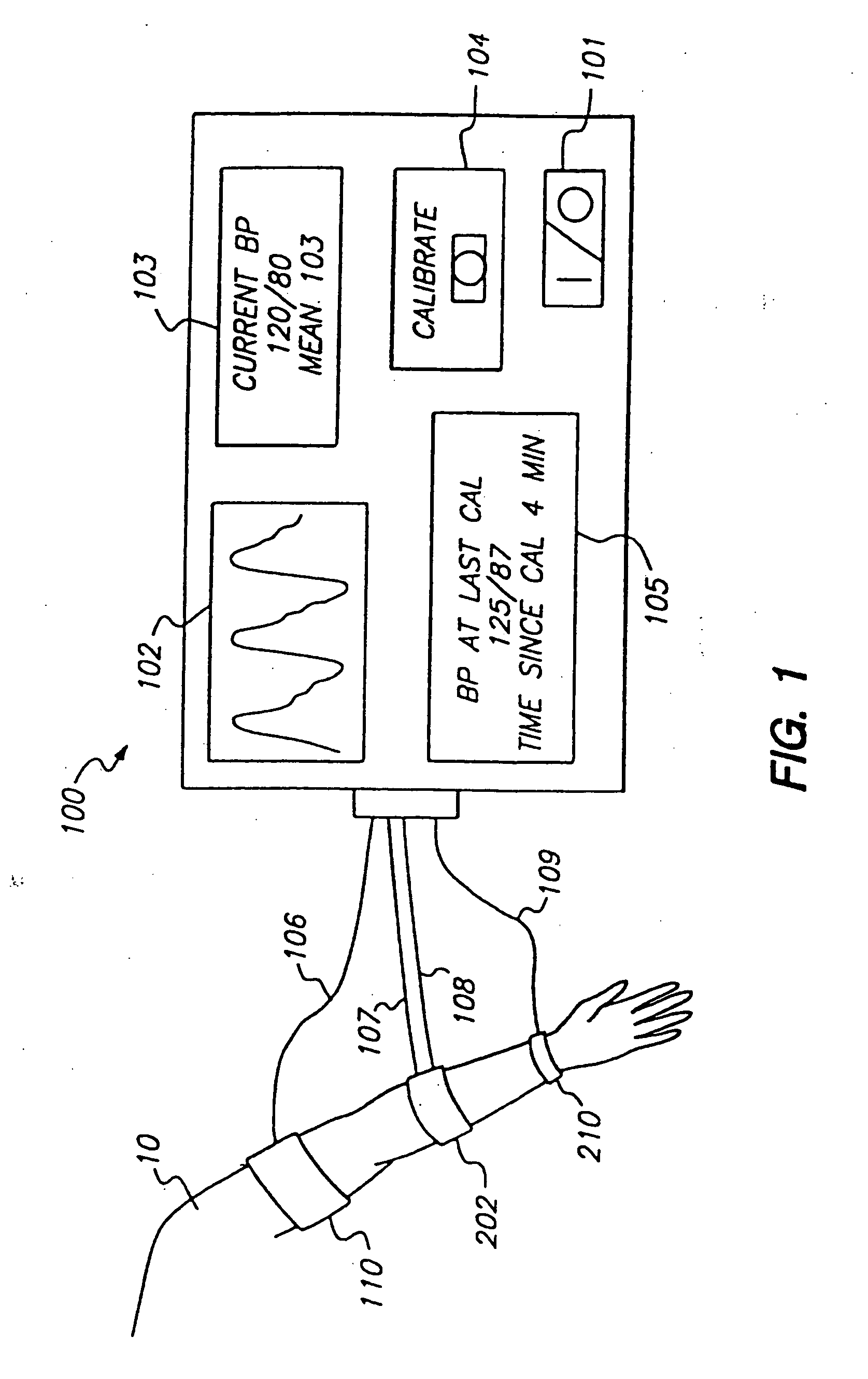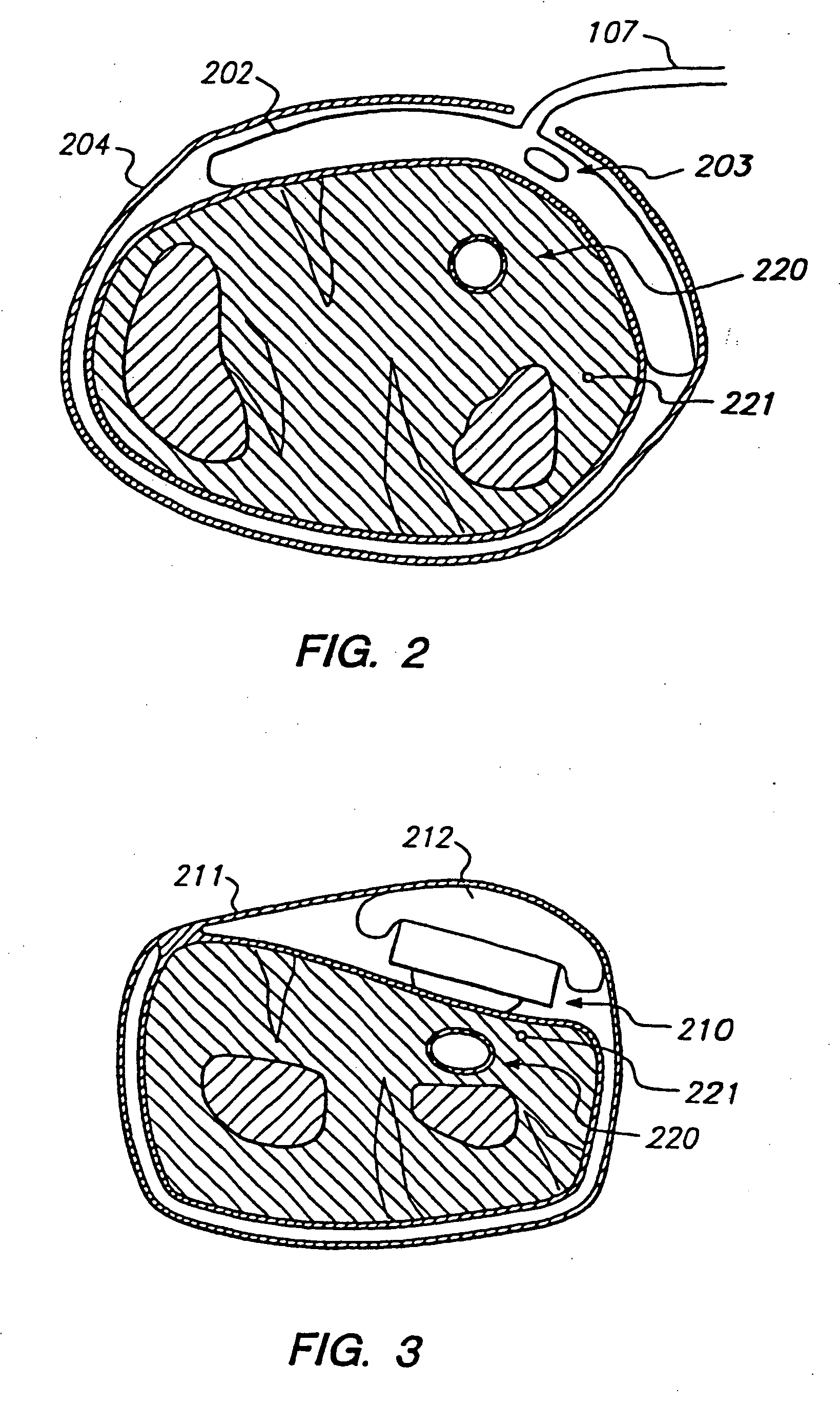System and method of determining whether to recalibrate a blood pressure monitor
recalibration system technology, applied in the field of system and method of determining whether to recalibrate a blood pressure monitor, can solve the problems of rapid change of blood pressure, corrective action, damage to or even death of tissue,
- Summary
- Abstract
- Description
- Claims
- Application Information
AI Technical Summary
Benefits of technology
Problems solved by technology
Method used
Image
Examples
Embodiment Construction
[0045] A preferred embodiment concentrates on the physiological parameter of blood pressure, however, many additional physiological parameters can be measured with the present invention including vascular wall compliance, ventricular contractions, vascular resistance, fluid volume, cardiac output, myocardial contractility and other related parameters. Those skilled in the art will appreciate that various changes and modifications can be made to the preferred embodiment while remaining within the scope of the present invention. As used herein, the term continuous means that the physiological parameter of interest is determined over a period of time, such as during the course of surgery. The implementation of portions of the invention in a digital computer is performed by sampling various input signals and performing the described procedures on a set of samples. Hence, a periodic determination of the physiological parameter of interest is within the definition of the term continuous. ...
PUM
 Login to View More
Login to View More Abstract
Description
Claims
Application Information
 Login to View More
Login to View More - R&D
- Intellectual Property
- Life Sciences
- Materials
- Tech Scout
- Unparalleled Data Quality
- Higher Quality Content
- 60% Fewer Hallucinations
Browse by: Latest US Patents, China's latest patents, Technical Efficacy Thesaurus, Application Domain, Technology Topic, Popular Technical Reports.
© 2025 PatSnap. All rights reserved.Legal|Privacy policy|Modern Slavery Act Transparency Statement|Sitemap|About US| Contact US: help@patsnap.com



